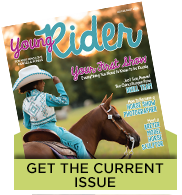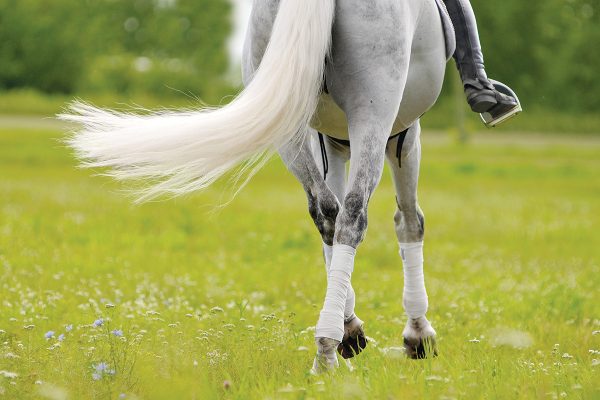
A gorgeous tail requires a gentle touch to prevent hair loss and breakage. When it comes to brushing, less is more! Too much brushing can be hard on the hair. Removing tangles by hand is the best way to avoid pulling out precious strands. Follow these tips to groom your horse’s tail perfectly.
Clean & Condition
A clean and conditioned tail is easier to manage and keep tangle-free. Use quality shampoo made for horses and be sure to rinse well. Follow with conditioner and a detangling spray. Allow the tail to dry before you comb or handle it—wet hair breaks more easily.
Detangle
Here’s how to detangle a tail to preserve every last strand.
Step 1: Start by picking out any shavings, hay or other debris stuck in the tail. For safety, remember to stand to the side when grooming your horse’s tail and not directly behind him.
Step 2: Spray the tail with a shine and detangling product. These products make the hair slippery so that knots slide right out. Regular use helps prevent knots from forming.
Step 3: Work with small sections of hair, and detangle from bottom to top. Hold the hair with one hand as you finger-comb with the other. Run your fingers through the hair, separating the strands. When you hit a tangle, gently pull the hairs apart. Keep at it until you can run your fingers through the tail easily without hitting any snags.
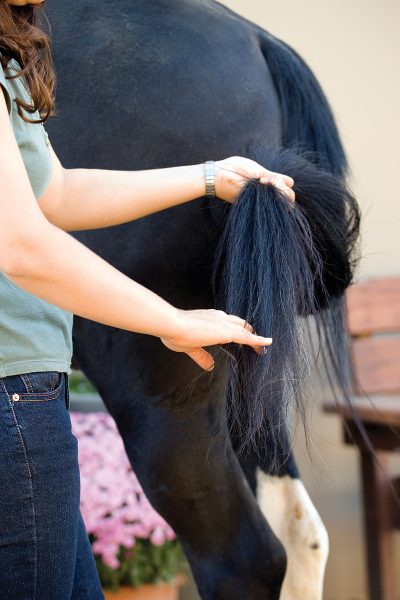
Step 4: After you’ve detangled the tail, you may opt to comb or brush it. Choose a wide-tooth comb or a brush with widely spaced, plastic-tipped bristles that will be gentle on the hair. Work in small sections, from the bottom up. Hold the hair above the section you’re brushing to minimize pulling on the roots.
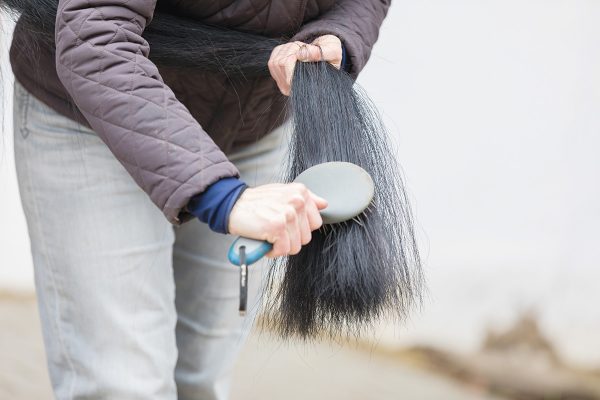
Burrs & Rubs
Burrs are prickly and tricky to remove from your horse’s tail, especially if there are a lot of them matted together. Coat the burrs with detangling gel or spray, and then begin working them out, starting from the bottom of the mat. You may want to wear gloves to protect your hands. You can also try taking a mane comb and using one or two of the teeth to gently help pry the stickers loose.
Horses rub their tails for various reasons, with unsightly results ranging from broken, flattened hair to hair loss and injury. Some common causes of tail rubbing include pinworms, a dirty sheath or udder, or an allergic reaction to flies or gnats (known as “sweet itch”). Shampoo that hasn’t been rinsed properly can also cause itchy skin. Fortunately, most of these issues are easily treated and solved.
Braiding & Bagging
Some people like to give their horse’s tail a little extra protection by braiding it or covering it with a tail bag.
Braiding a horse’s tail keeps it from getting tangled. Starting several inches below the tailbone, make a single loose braid, and fasten with a hair elastic.
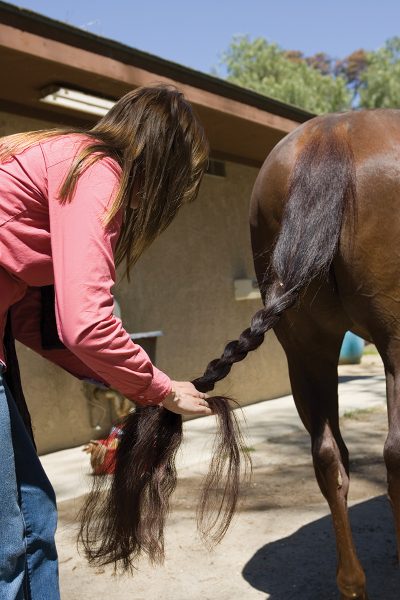
A tail bag can help keep the tail clean and prevent it from snagging on things. These long protective pouches come in various styles made of nylon or soft, stretchy Lycra, with ties or a snap fastener at the top.
To bag your horse’s tail, make a single braid as described above, put the braid in the tail bag, and fasten the bag’s ties through the braided hair. Never attach anything around the horse’s tailbone—this could cut off circulation and cause serious harm.
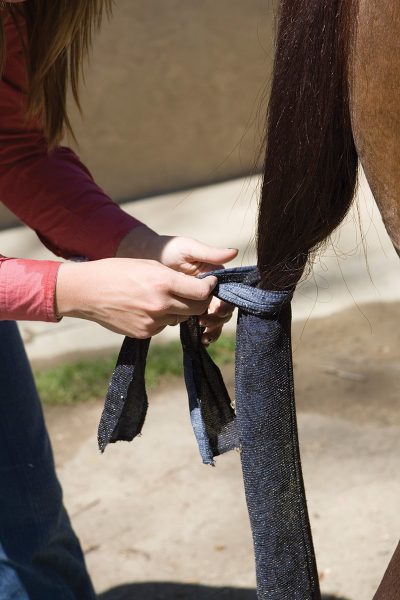
You’ll need to check the tail bag daily, and re-do as needed. Take the tail down to groom, re-braid and bag weekly.
Bagging the tail hinders your horse’s ability to swish flies away, so make sure you are able to provide enough additional fly protection to keep him comfortable. Some tail bags include fringe at the end to help act as a flyswatter. If it’s particularly hot and buggy, however, it’s best to leave the horse’s tail loose to swish flies away.
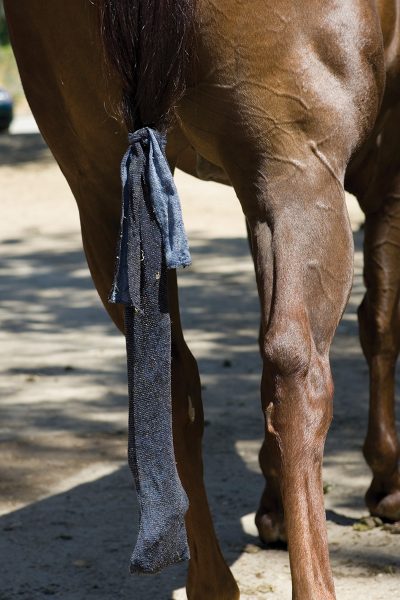
With good tail care techniques, including regular detangling, you can keep your horse’s tail tamed and help it to look thicker and fuller.
This article about how to groom a horse’s tail appeared in the November 2020 Mini Digital issue of Young Rider magazine. Click here to subscribe!

